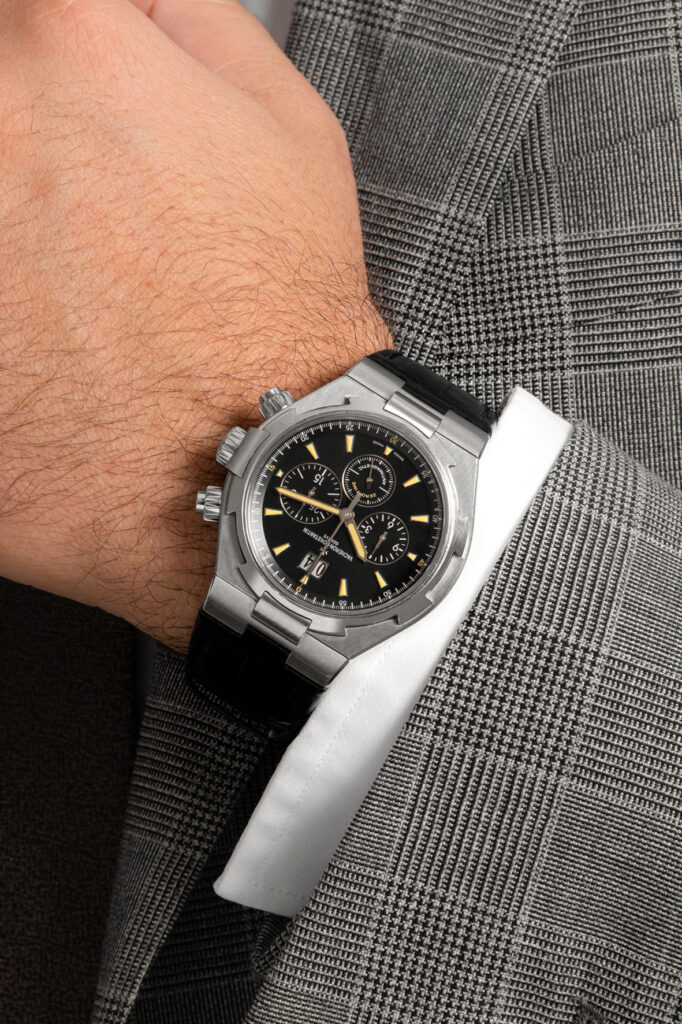Pisa Orologeria Icons: Vacheron Constantin Chronograph Overseas Zero Time
5 September 2022Many families, in the great tradition of Italian watchmaking retail, earned respect from the most important brands thanks to their competence and their passion. Few of them, however, have been honored by the same brands with special edition watches, made especially for them and their customers. Among these: the Pisa family.
For over 80 years, thanks to their love and dedication to refined hands, Pisa Orologeria has been an ambassador of all the most important watchmaking brands, with which they have built a relationship of trust based on a common vision of excellence. Over time, therefore, more than one brand paired its name with that of the Milanese family on the dial of exclusive watches, created especially to strengthen a collaboration that had become much more than just professional.
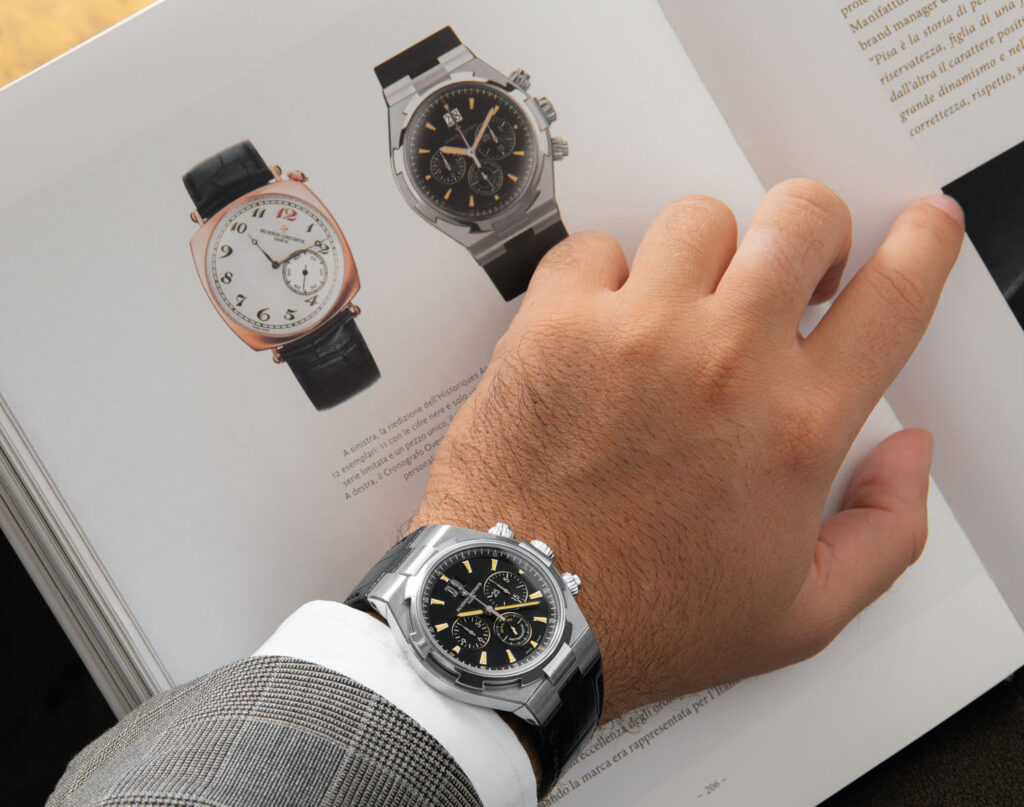
Among these brands is Vacheron Constantin, which in 2010 chose the Overseas collection as a common ground on which to develop a limited edition together with Pisa Orologeria. It is one of the brand’s symbolic timepieces, which has a relatively young history unlike other collections of the Geneva Maison, but it represents well the vision of the Pisa family, always oriented towards modernity, glancing at the future.
We will not spend words on the Pisa family’s history: it is well portrayed here. It is worthwhile making an excursus on the history of Overseas before talking about the limited edition; both because it is a very beautiful story, and because it helps understanding the choice of this “luxury sport watch” to pay tribute to the work and commitment of the Milanese retailer.
A BRIEF HISTORY OF VACHERON CONSTANTIN’S OVERSEAS
Vacheron Constantin entered the so-called “luxury sport watch market” in 1977, inaugurated by Audemars Piguet’s Royal Oak in 1972. It did so with the 222, designed by Jorg Hysek. A thin tonneau case, a round notched bezel and a tiny Maltese cross inlaid at 5 o’clock were its hallmarks.
In the mid-1980s it was replaced by the 333, and then by the Phidias, two not-so-memorable references. The success of Vacheron Constantin’s sports watches came in 1996 with the launch of the Overseas, a descendant of the 222. As if the two references in between almost didn’t exist.
The development of the Overseas had started a few months earlier by a design team that included designer Dino Modolo and Vacheron Constantin designer Vincent Kaufmann. More than being just a simple high-end sports watch, the Overseas aimed to satisfy world travelers who appreciated casual yet elegant timepieces.
Like the 222, the Overseas was built around a tonneau case with a fluted bezel reminiscent of the Maltese cross. Its lines were extended by an integrated bracelet with geometric links. The first Overseas had a 37 mm case and was powered by the VC1310 caliber, a COSC-certified version of the ultra-flat Girard-Perregaux 3100 automatic.
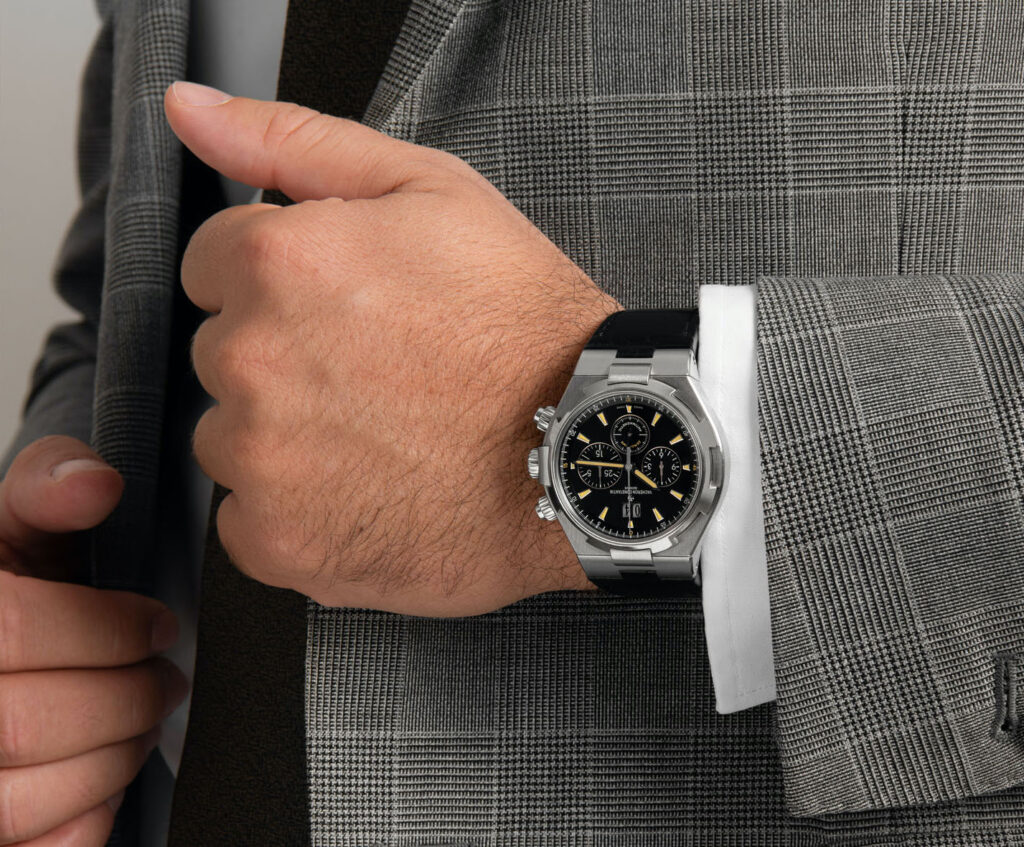
In 1999 the chronograph was introduced, then from 2004 to 2016 the second version of the watch paved the way for the Overseas to the most important complications and to the use of different materials for the case and bracelet. Finally, in 2016 Vacheron Constantin presented the renewed collection that we can still appreciate today, with a more elegant and refined style – its distinctive character and a cleaner design with smoother lines, and a case increasingly leaning towards the tonneau shape.
OVERSEAS ZERO TIME: THE NAME’S ORIGIN
The limited edition for Pisa Orologeria, created in 2010, belongs to what we could define the Overseas’ second season. It is a chronograph produced in 20 copies numbered on the case back and called Overseas Zero Time. The name also has its story.
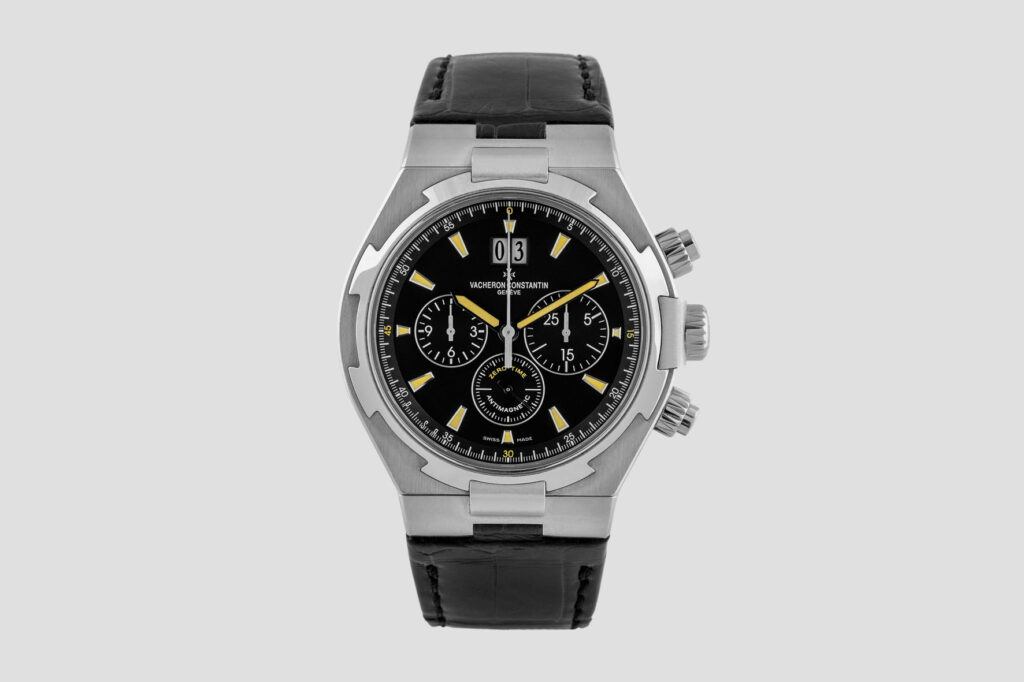
The “father” for this name was Fabio Bertini, commercial director of Pisa Orologeria for years, who, together with the Pisa sisters, conferred its international status to the Milanese boutique. The watch was designed at the same time that Pisa Orologeria was about to open the Vacheron Constantin space where the Patek Philippe boutique currently is.
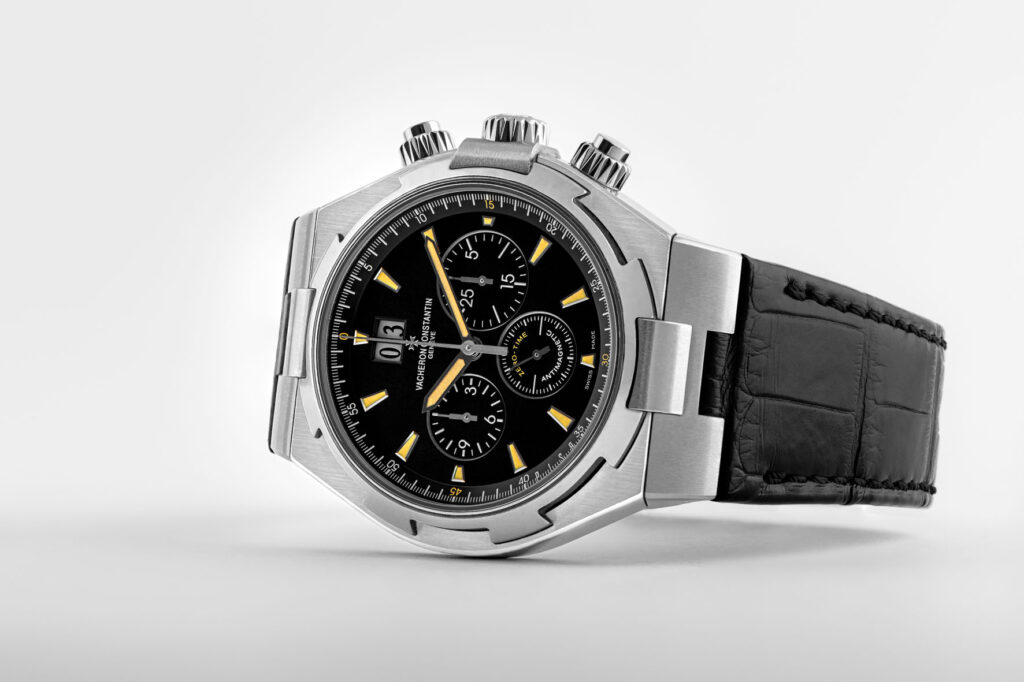
Fabio Bertini thought about Zero Time as a provocation to the concept of time in chronography. The Overseas Time Zero Chronograph is a special edition that arose from a very particular interpretation of time: the zero is in fact the starting point of time, whether for telling the time or counting chronograph seconds. This is why 0 – instead of the traditional 60 – is the number indicated on the rehaut at 12 o’clock at the start of the chronograph second count, and Zero Time is the model’s name that appears inside the seconds sub-dial.
VACHERON CONSTANTIN OVERSEAS ZERO TIME CHRONOGRAPH FOR PISA OROLOGERIA
This model has a 42 mm brushed stainless steel case, an automatic movement with a big date at 12 o’clock, a chronograph with 30-minute and 12-hour counters, and small seconds at 6 o’clock.
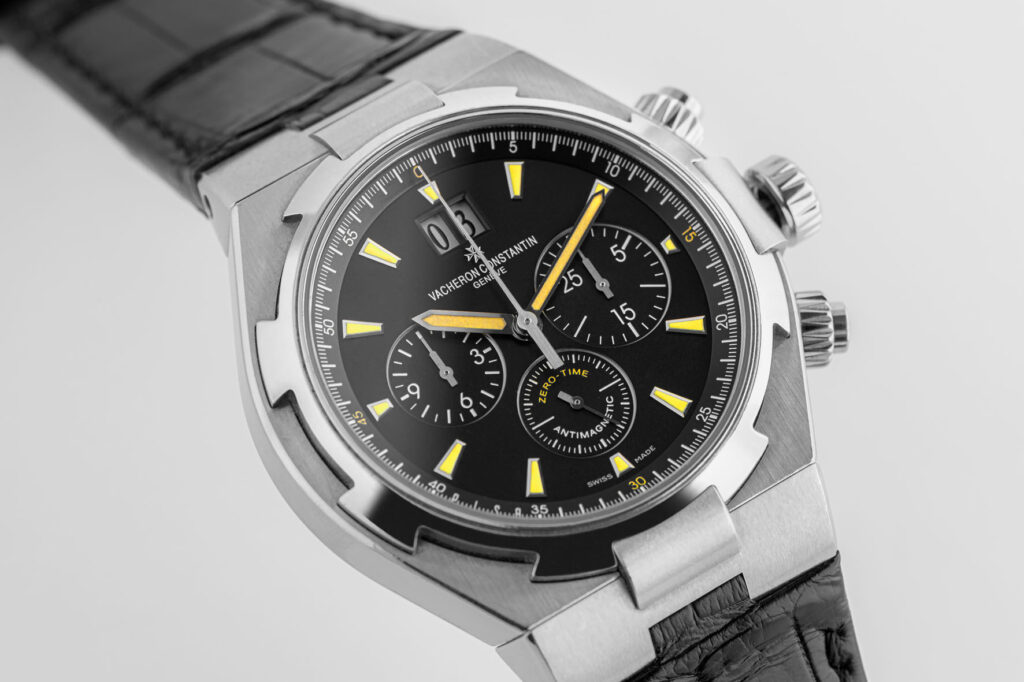
Water resistant to 150 meters, its dial features all the customizations arranged with Pisa Orologeria: the bottom is matte black without a guilloché pattern, the counters are white, the markers and hands – as well as the figures 15/30/45 on the rehaut – are coated with a luminescent material in a new and exclusive pale yellow.
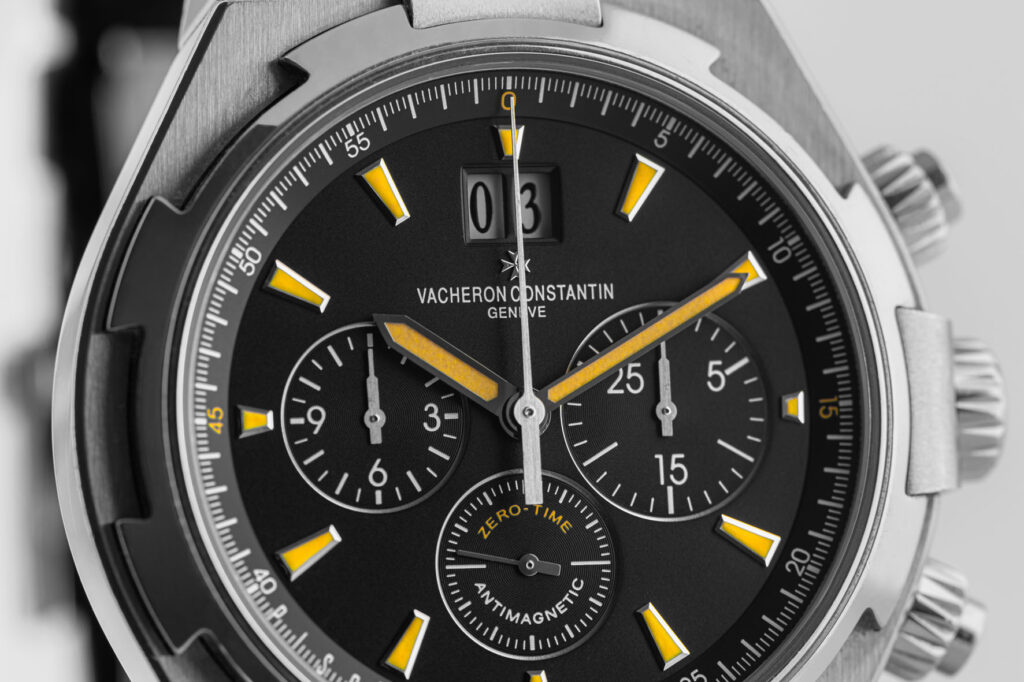
The matte and non-glossy black color, like that of the current collection, was chosen to pay homage to the Vacheron dials of the 1950s and 1960s, and to facilitate the readability of the information on the dial. That same desire to pay homage to the past inspired the choice of the yellowish luminescent material instead of the more modern white one.
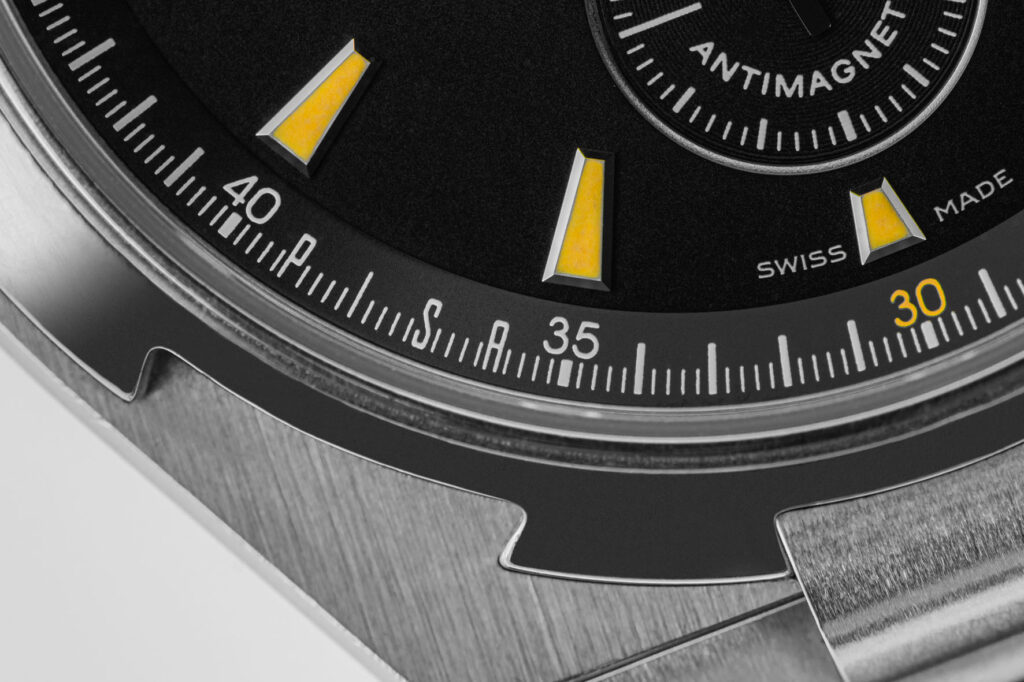
As a further recognition of the partnership between Vacheron Constantin and Pisa Orologeria, if you look carefully at the dial, you can see a hidden inscription. The name Pisa is discreetly inserted in the small parts, between 35 and 40 minutes. This secret signature is a reference to Abraham-Louis Breguet, who used to use it as an anti-counterfeiting trick.
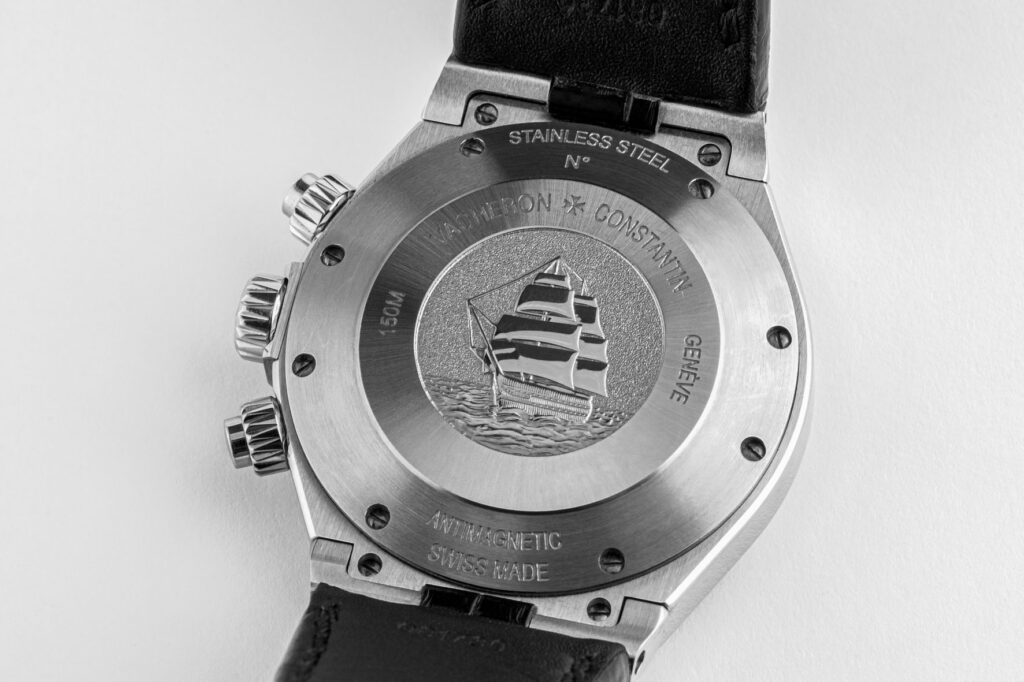
A UNIQUE BOND
The series has been completely sold out and stocks exhausted. And not by chance. Pisa Orologeria’s loyal customers are well aware of the collectible value and historical importance of these special editions, what Pisa calls “Icons”.
Owning one of these watches means establishing a unique and long-lasting relationship both with excellent watchmaking and with one of the families that have contributed most from the post-war period to today to spread the culture and love for these watches. The timepiece becomes the symbol of the bond that this love and this culture have welded between customer and retailer: a bond that is as rare and precious as the watch itself. Maybe even more.
By Davide Passoni

